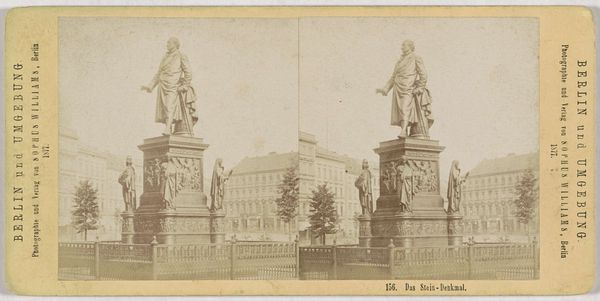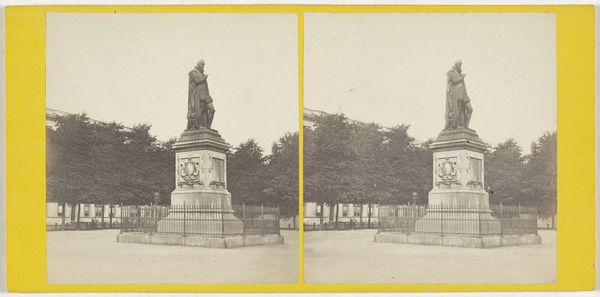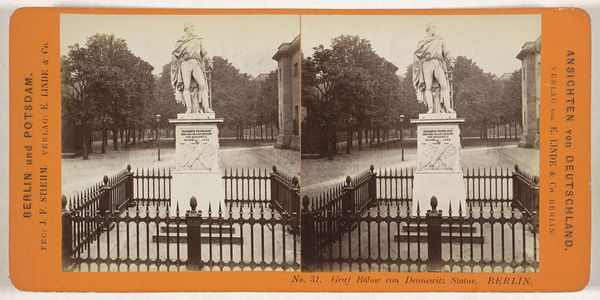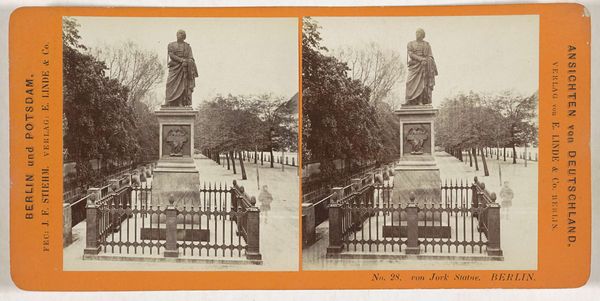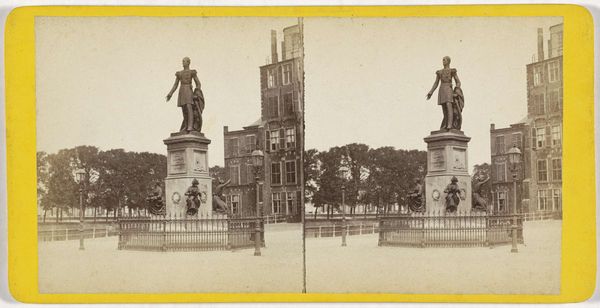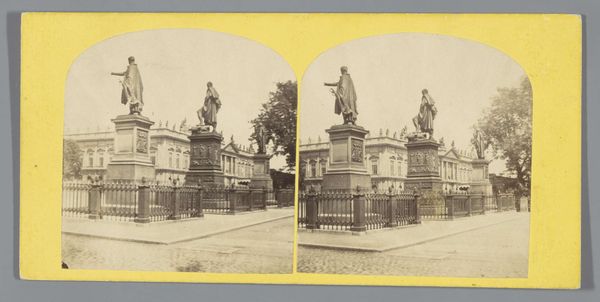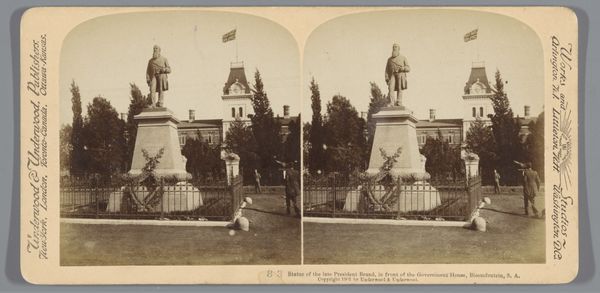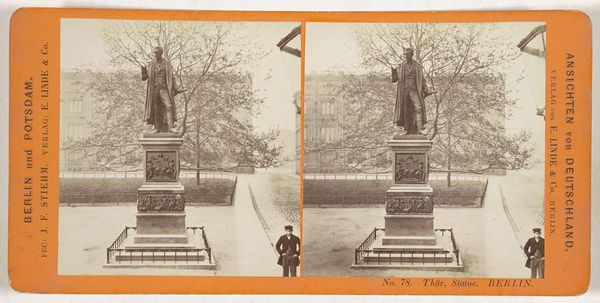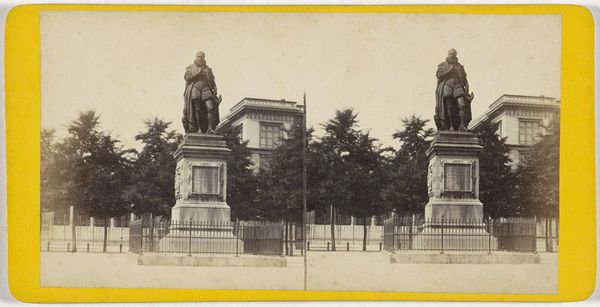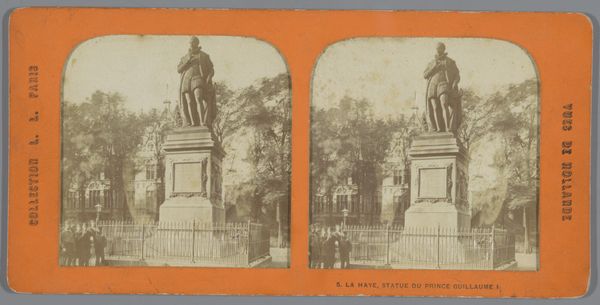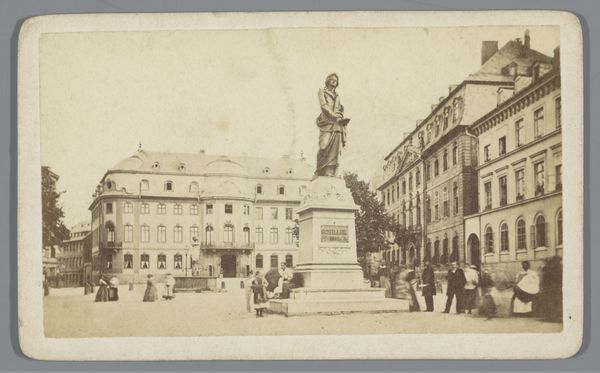
Standbeeld van veldmaarschalk Gebhard Leberecht von Blücher in Berlijn 1868 - 1870
0:00
0:00
Dimensions: height 86 mm, width 176 mm
Copyright: Rijks Museum: Open Domain
Curator: Let’s explore this intriguing historical print showcasing Johann Friedrich Stiehm’s view of the statue of Field Marshal Gebhard Leberecht von Blücher in Berlin, circa 1868 to 1870. Editor: My initial response is focused on the formal pose; it suggests a fabricated valor, almost manufactured for a sense of cultural authority. Curator: Precisely. The neoclassical composition, framing the statue within a cityscape, emphasizes this construction of power and monumentality. Look at the strong verticality, the play of light and shadow giving form to a cultural memory in the making. Editor: But think about what went into that monumentality – the extraction of resources to craft the statue, the labor of the sculptors, the investment from a public eager to legitimize martial values after military victories. Curator: Of course. We're speaking to the cultural underpinnings but it is not detached from historical material forces. Stiehm uses the photographic print to disseminate it further. How interesting it would be to see material bills and contracts for this kind of artistic production to fully realize its process and effects. Editor: Exactly, these prints democratized and broadcasted militaristic ideas by circulating the monument’s image into society at large. What would have this reproduction meant for different layers of Prussian society, and its relationship to the Prussian war machine? Curator: It’s the convergence of aesthetics and ideology, creating a powerful statement, literally materializing power. The semiotic reading offers up multiple interpretations: Blücher symbolizes military prowess and German unity, while the built urban environment speaks of established civic order. Editor: A perfect illustration of ideology constructed through production; bronze or marble doesn't simply exist – labor shapes it to broadcast ideological messaging. The raw materiality then, cannot be detached from social relations of its creation and consumption. Curator: A reminder that monuments, and representations thereof, never stand apart from power dynamics and manufacturing the cultural consensus of what power means. Editor: Indeed, viewing this work through materiality provides necessary contrast that moves the static and romanticized symbolism that many viewers accept outright.
Comments
No comments
Be the first to comment and join the conversation on the ultimate creative platform.

